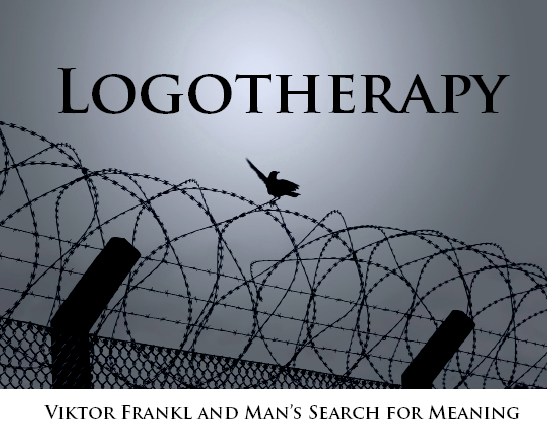Logotherapy is a form of psychotherapy that uses logos or symbols to help people understand their emotions, thoughts, and behaviors. In this article, we will explore logotherapy in more detail, including who it can help, how it works, and the benefits it can offer.
Contents
Understanding Logo Therapy
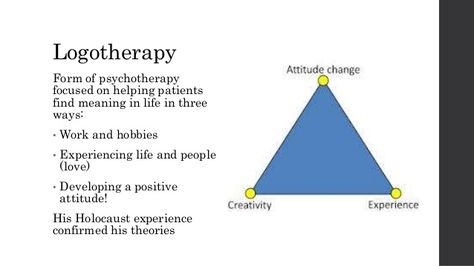
Logotherapy is a form of psychotherapy that uses logos or symbols to help people understand their emotions, thoughts, and behaviors. This type of therapy has its roots in the work of Carl Jung. Jung believed that the unconscious could be accessed through symbols.
Types of Logo Therapy
There are different types of logotherapy, including image-based logotherapy, music-based logotherapy, and word-based logotherapy.
- Image-based logotherapy: It uses images to help people understand their emotions and thoughts. Thus, this type of therapy can be helpful for people who have difficulty expressing themselves verbally.
- Music-based logotherapy: It uses music to help people understand their emotions and thoughts. Thus, this type of therapy can be helpful for people who find it difficult to express themselves verbally or through images.
- Word-based logotherapy: It uses words to help people understand their emotions and thoughts. Thus, this type of therapy can be helpful for people who have difficulty expressing themselves verbally. Or who need to process information more linearly.
Theory Behind Logo Therapy
Logotherapy is based on the theory that people are motivated by three main things: love, will, and reason.
- Love refers to our need for connection and belonging. Also, it is the desire to love and be loved.
- Will refers to our need for meaning and purpose. In other words, it is the desire to do something with our lives that has significance.
- Reason refers to our need for understanding and knowledge. In a way, it is the desire to make sense of our lives and the world around us.
Now, it is these motivations that drive our behavior and determine our goals in life. Furthermore, it is a way to help people live more fully and achieve their goals.
Components of Franklin Philosophy
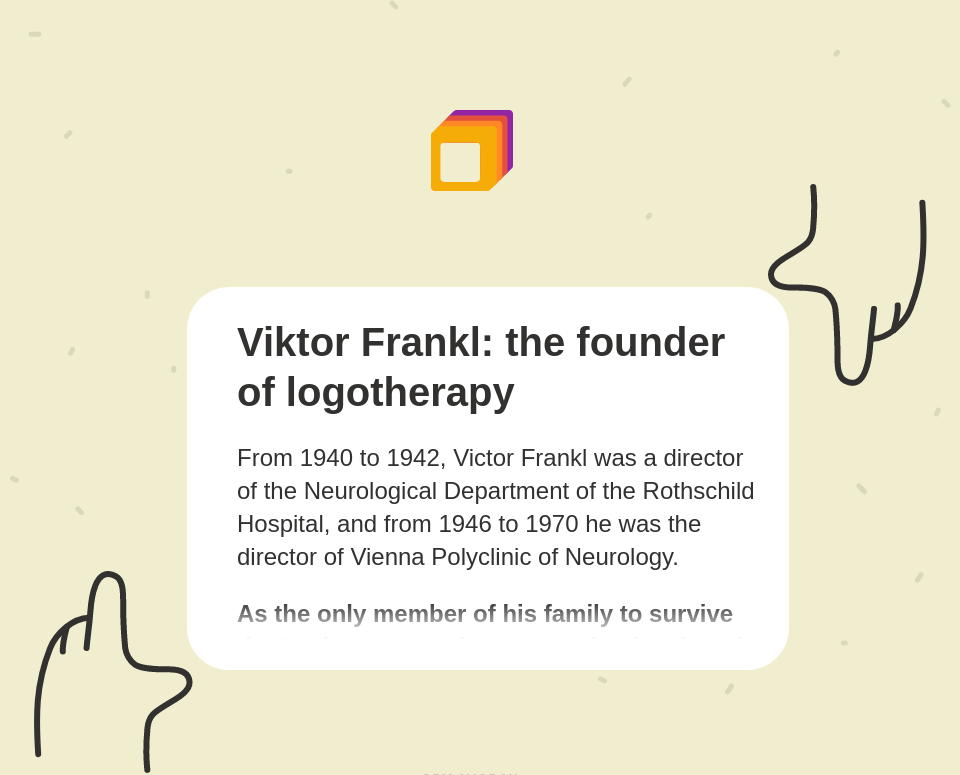
Logotherapy is based on the Franklin philosophy. It has four key components: creative expression, self-awareness, personal growth, and service to others. Each of these components is important in achieving overall well-being.
- Creative expression: It allows people to use their imagination and creativity to explore different aspects of themselves. Therefore, it can also be a way to release emotions and feelings.
- Self-awareness: It allows people to understand their thoughts, feelings, and behaviors. As a result, it helps them to see how they impact others and the world around them.
- Personal growth: It encourages people to continue growing and learning throughout their lives. Consequently, it helps them become more balanced and fulfilled individuals.
- Service to others: It is about giving back to the community and making a difference in the world. In this manner, it helps people feel connected and fulfilled.
History And Development
Logotherapy is based on the philosophy of Viktor Frankl. He was influenced by the work of Carl Jung and Sigmund Freud. Frankl believed that humans need to find meaning in their lives. And so, he developed logotherapy as a way to help people find meaning and purpose in their lives.
Unfolding Logo Therapy
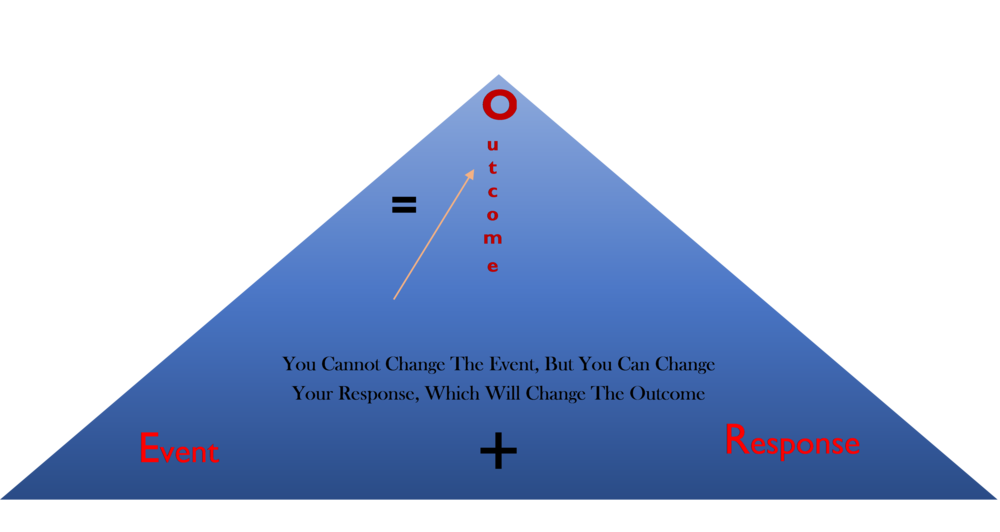
Logotherapy is a process that unfolds over time. It typically lasts for six to twelve months.
Who Can It Help
Logotherapy can help people of all ages, including children, adolescents, adults, and older adults. Furthermore, it can be helpful for people who are struggling with issues. Such as depression, anxiety, or addiction.
How It Works
Logotherapy typically consists of weekly sessions that last for 50 minutes to an hour. During these sessions, the therapist will help the client to understand their emotions and thoughts. In addition, the therapist will also use techniques to help the client process their emotions and thoughts.
Techniques Used In Logo Therapy
Logotherapy uses several techniques to help people connect with their motivations. This is how it helps them find meaning in their lives. Some of these techniques include:
- Exploration: This technique involves exploring the client’s emotions and thoughts.
- Reflection: This technique involves reflecting on the client’s emotions and thoughts.
- Clarification: This technique involves clarifying the client’s emotions and thoughts.
- Confrontation: This technique involves confronting the client’s emotions and thoughts.
NOTE: Each person will respond to these techniques in different ways. However, it is important to find what works best for you. As well as to continue using it over time.
Evaluating Logo Therapy
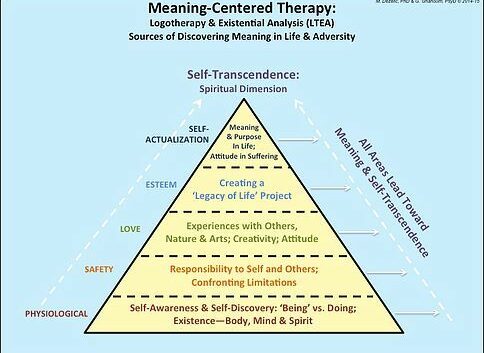
Logotherapy is typically evaluated after six to twelve months. The therapist will typically ask the client to complete a questionnaire. Or to provide feedback to evaluate the effectiveness of therapy.
Benefits of Logo Therapy
There are several benefits to logotherapy. However, some of the key benefits include:
- improved self-esteem
- greater clarity and focus
- better communication skills
- increased sense of well-being
- more insight into oneself and others
Limitations of Logo Therapy
Some people may find it difficult to engage in the process. Or they may find that the therapy does not address their specific needs. Furthermore, some of the key limitations include:
- shall be expensive
- may not be covered by insurance
- may not be suitable for everyone
- can be challenging to find a logo therapist
Why Consider It
If you are struggling with your mental health, or if you are seeking a more holistic approach to therapy; logotherapy may be a good option for you. However, it is important to consult with a mental health professional to determine if logotherapy is right for you.
Finding Logo Therapist
If you are interested in starting logotherapy; then you will need to find a therapist who practices this type of therapy.
How To Find One
- You can ask your doctor for referrals, or
- You can search online directories such as the American Association of Marriage and Family Therapists (AAMFT) website
What To Look Out For
- Find a therapist with who you feel comfortable.
- Make sure that the therapist is licensed and insured.
- Ask the therapist about their approach to therapy.
- Ask them to provide you with references from past clients.
Red Flags To Avoid
There are a couple of red flags that you need to be aware of. For instance, be cautious of therapists who:
- promote miracle cures
- require you to sign a contract
- charge a lot of money for services
Pursuing Training In Logo Therapy
If you are interested in pursuing training in logotherapy, then you will need to find a program that offers this type of training. There are several programs that offer logotherapy training. These programs typically offer online courses, as well as in-person courses.
You can find these programs by searching online, or by asking your doctor for referrals. When considering a logotherapy training program; it is important to make sure that the program is accredited. It is also important to make sure that the program offers a certificate or diploma upon completion.
NOTE: If you have an interest in pursuing training in logotherapy, then you can contact the International Association for Logotherapy and Existential Analysis (IALEA).
Hearing From Experts
If you are considering starting logotherapy, then you may want to listen to what experts have to say about this type of therapy. However, here are some quotes from experts about the benefits of logotherapy:
“Logotherapy is a unique form of therapy that can help individuals find meaning in their lives, even while suffering.” -Dr. David J. Pollard, Ph.D., Licensed Clinical Psychologist
“I have found logotherapy to be an effective way to help people who are struggling with life’s big questions.” -Dr. Julie Exline, Ph.D., ABPP, Professor of Psychology at Case Western Reserve University
Case Study
Here is a case study of how logotherapy helped one person:
“I was struggling with depression and anxiety, and I didn’t know where to turn. Thankfully, I was referred to a therapist who practiced logotherapy. And it changed my life.
The therapist helped me to understand my emotions and thoughts. And she also helped me to resolve conflicts. Moreover, it helped me develop a sense of meaning and purpose in my life. Gradually, I became more confident and happier than I ever thought possible.”
Resources
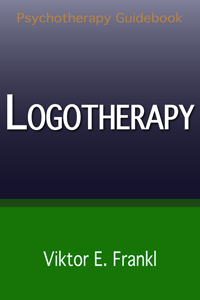
If you are interested in learning more about logotherapy; then you may want to check out the following resources:
- The International Association for Logo Therapy: This organization provides information about logotherapy. And its benefits, as well as a directory of qualified therapists.
- The Franklin Institute: This website provides information about the history and development of logotherapy, as well as its components.
- The Meaning of Life: A Logotherapy Guidebook by Victor Frankl
Conclusion
Logotherapy can be an excellent tool for personal growth and development. It can help you to understand yourself better. Also, help develop a more positive outlook on life. And guide to find greater meaning and purpose in your life.
If you are considering logotherapy, be sure to find a qualified therapist who is experienced in working with this unique approach. With logotherapy, you can achieve greater self-awareness, insight, and satisfaction in life.
A Word From Therapy Mantra
Your mental health — Your psychological, emotional, and social well-being — has an impact on every aspect of your life. Positive mental health essentially allows you to effectively deal with life’s everyday challenges.
At TherapyMantra, we have a team of therapists who provide affordable online therapy to assist you with issues such as depression, anxiety, stress, workplace Issues, addiction, relationship, OCD, LGBTQ, and PTSD. You can book a free therapy or download our free Android or iOS app.
